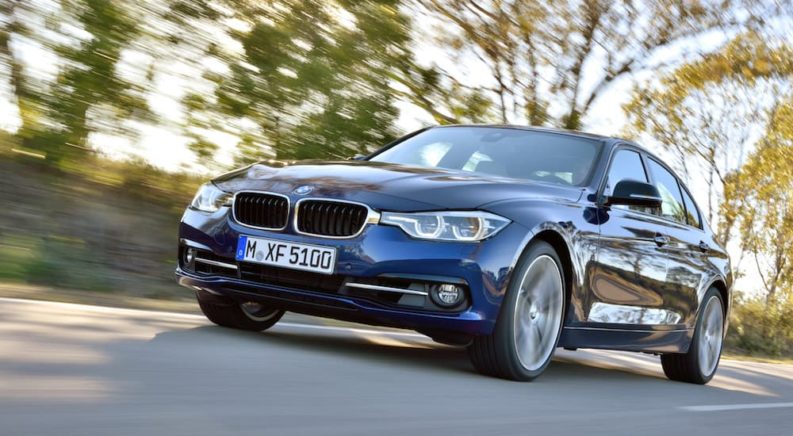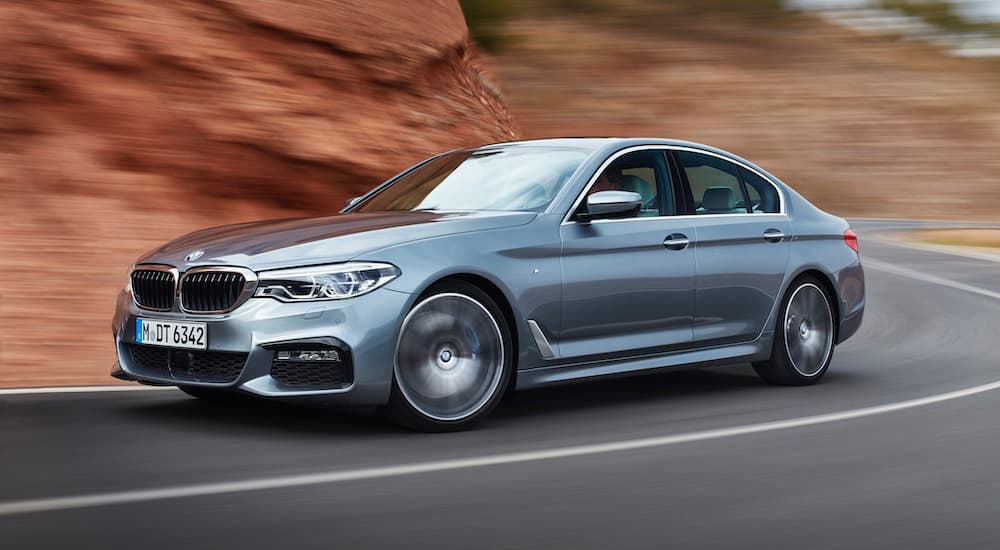You know you’re getting seriously deep into car culture, vicariously or not, when you start to recognize and talk about specific vehicles by their internal identification codes. Some of this jargon is intuitive––it doesn’t take long to figure out that the C8 Corvette is the 8th generation; the same goes for the Mk 8 Golf GTI. However, to the uninitiated, a conversation about the Porsche 911 or BMW M3 is basically in code. “What’s the Porsche 997? I’ve never heard of a BMW E30!” you think as your interest rapidly wanes. But just you wait until the Beemer fan gets going on the topic of the BMW B58 engine because they’re about to lay down a clinic on speaking in nearly unintelligible mumbo-jumbo without having to lose their mind first. Chances are you’re somewhere between the two extremes, and you’re curious about what makes this engine such a special block. I’ll sum it up in four words: versatility, reliability, and tunability.
Jack of All Trades, Master of All
That’s right, I said four words––”and” counts! Technicalities aside, the B58 engine is a truly stellar accomplishment and represents a benchmark that other makers would strive to emulate if the internal combustion engine didn’t seem destined for the scrap heap. Let’s start with a brief introduction:
The B58 was released in 2015, first applied in the F30 340i (that is, the 2015 BMW 3 Series sedan––and you thought the Toyota bZ4X name was a mouthful). The engine that it replaced, the N55, had been used in at least 43 BMW models since 2009, from the 135i to the X6 xDrive35i––not counting S55 high-performance versions used in upper-tier M cars. Sure, it was known to have problems with the valve cover gasket and oil filter housing leaks, but it covered a wide range of applications, so the B58 had big shoes to fill!
As part of a new modular engine family produced by BMW to reduce development and manufacturing costs (the entire family features 500 cc cylinder displacement, and the B58’s block is identical to the diesel equivalent B57), the straight-6 turbocharged B58 has been a home run, performing admirably in at least 52 models, including several that aren’t even BMWs! The B58 is so good that it’s been borrowed for the Morgan Plus Six and has more famously been transplanted into the latest generation of the Toyota Supra!
In the BMW lineup, the B58 features in everything from the tiny M140i to the gargantuan X7 xDrive40i. Honorable mention to the S58 variant for its appearance in several M models, as well. What is really impressive about this is that from its minimum 322 hp output to its peak of 382 hp, the B58 performs as if it was built specifically for whichever vehicle you find it in. When used in a sports car, there’s no turbo lag to betray that it was designed primarily for commuters. There’s no adverse NVH to suggest that the 7 Series is using a track car motor either, and when driving three-row X models with this engine, nothing about it suggests “underpowered cost-cutting measure.” Whatever BMW wants it to do, the B58 just does it and does it like it was designed for the purpose.
Take the Toyota Plug as a Good Sign
Next up is reliability, but a caveat first: not a lot of B58 engines have been around long enough to show their true colors––only a few models featuring this engine have even reached their fifth birthday, so most examples will still be well under 100,000 miles today. And the B58 is no modest tweak of the N55, whose demons are quite well known by now, making it tough to say that the B58 doesn’t have any new issues that we haven’t met yet.
In fact, despite the minute increase in displacement to precisely 3.0 L, quite a lot has changed from the N55. Boost pressure is up by 20%, and the compression ratio is up to 11.0:1. The water-to-air intercooler has been integrated into the intake plenum, which allows the turbocharger to be placed closer to the cylinders and operate more efficiently. It features an entirely new closed-deck crankcase and an engine-mounted heat encapsulation system that retains warmth for up to 36 hours, reducing start-up emissions and wear due to heat cycling and cold operation. While this should be particularly helpful for mitigating, or at least postponing, issues with the valve cover gasket, only time will tell if these changes haven’t introduced new long-term issues.
There is reason for hope, however! To date, it appears that the most “common” problems experienced with the B58 engine include coolant loss (which is nothing to worry about if the loss rate is low, such as a fluid top-up every 10,000 miles), “disintegrating” oil filters, and VANOS solenoid failures (a relatively common wear-and-tear item since BMW introduced its variable valve timing system in 1992). None of these qualify as truly “common” issues thus far, and the B58 is outperforming its N55 predecessor at this point in its run.
The best part of all this is the Toyota Supra connection. The new Supra had to have a straight-6, a core trait of Supra design, but developing one in-house was impractical for Toyota. That the prudent-minded giant looked out into the world of established straight-6 engines and decided that the BMW B58 was the best candidate for its halo car says volumes about the B58’s straight-up performance and reliability––it just couldn’t go in a Toyota if it wasn’t.
Singing in Tune
Now we’re really getting into enthusiast territory––engine tuning is not for the dispassionate. It’s serious business, and not every block is up to the task of handling 1000+ hp, even if you find a way to make that much. Fortunately, the B58 is not among those weaklings. Though its base performance is already a treat, that’s all it is––base performance. Fresh from the factory, the B58 is nowhere near the performance ceiling that even the stock hardware is capable of.
This may have been important in the Toyota’s decision, too––the last Supra, which featured famously in The Fast and the Furious, was notoriously tunable with the 2JZ engine. That beast was so overengineered that it could take just about anything––but so can the B58. Consider that the S58 high-performance variant uses the same block upgraded to a 503 hp maniac for the Competition variants of the current X3 M, X4 M, M3, and M4!
Turbocharged cars, in general, can see significant performance gains by simply having the powertrain “remapped,” but not every turbocharged engine takes to remapping as nicely as the B58. You can pay an expert to get your B58 to 400 hp or higher reliably without any other changes. Add a twin-turbo setup and some improved intake/exhaust components, and (as demonstrated by the S58) 500 hp is suddenly within reach.
What’s more is that additional tuning mods can bring the B58 north of 700 hp without replacing the crankshaft or other bottom-end engine components, a testament to their strength and durability. Having a factory forged crankshaft and a crank girdle to stiffen things up certainly doesn’t hurt! The fact that the engine can be modified to produce more than twice as much power as the stock configuration without having to tear it apart and upgrade the internals is a testament to the B58’s robust design. Sure, BMW was probably thinking more about reliability to keep its reputation going as they dropped this thing into virtually every model in the lineup, but the end result is the same.
The One to Know
It sounds like an engine from a dream. A turbocharged system with no turbo lag. High power on demand, without rattling or straining under any circumstances. A wicked sports-car sound when you want it and composed luxury car cruising when you don’t.
Despite the oxymorons, it’s absolutely real. The B58, thanks in part to a block design shared with the diesel B57 and high-power S58, is built to handle high boost pressures and to quickly disperse heat. Truthfully, they overengineered the bejesus out of it so that it would serve as a reliable commuter for the tens of thousands of cars that BMW is putting it in every year, but the why doesn’t really matter. It may be too early to tell if the B58 can reliably resist the ravages of time and become a true icon, but it’s off to a fantastic start, and an upcoming upgrade is set to bring it to new heights––potentially delivering over 400 hp stock!
Others will say the S62 from the E39 M5 or the naturally-aspirated S54 from the E46 M3 is the best engine that BMW ever made. Others still will insist that nothing can supplant the M88, the first M engine, which was used in the M1. But if you’re a modern enthusiast and you had to pick just one BMW engine to know about, the B58 has got to be it. It’s a good engine, it’s everywhere, it’s in everything, and it isn’t going away; it just might be the most effective engine BMW has ever made. Not bad for a block of aluminum with a half-dozen half-liter holes in it.






